How to Install Linux
Install any Linux distribution

Download the Linux distribution of your choice. If you're new to Linux, consider choosing a lightweight and easy-to-use distribution like Ubuntu or Linux Mint. Linux distributions (also known as "distros") are often available in ISO format and are free to download. You can find the ISO file of the distribution you choose on the developer's website. This format needs to be burned to a CD or USB before it can be used to install Linux. This process will create a Live CD or Live USB.
A Live CD or Live USB is a disc that you can use as a boot point, usually containing a preview of the operating system version and running directly on the CD/USB.
You can install a disc imaging program or use the built-in burning tool on Windows 7, 8 or Mac OS X. Pen Drive Linux and UNetBootin are two popular tools for burning ISO files to USB.

Boot from Live CD or Live USB. Most computers are set up to boot from the hard drive first, which means you need to change some settings to boot from a newly burned CD or USB. Start by restarting your computer.
After the computer restarts, press the function key to access the boot menu. The key for this system will appear at the top of the screen with the manufacturer's logo. Common keys include F12, F2 or Del.
Windows 8 users will press the Shift key and click restart. The Advanced Startup Options panel will be loaded and you can boot from the CD here.
Windows 10 users need to go to the advanced startup section in settings and click "Restart Now."
If your computer doesn't allow you to access the boot menu directly from the manufacturer's quick screen, it's likely that this panel is hidden in the BIOS. You can access the BIOS menu in the same way you use to open the boot menu. On the manufacturer's quick screen, the function key will be displayed in the lower left/right corner.
After going to the boot menu, select the live CD or USB. When finished changing the settings, save and exit the boot menu/BIOS. The computer will continue the boot process.
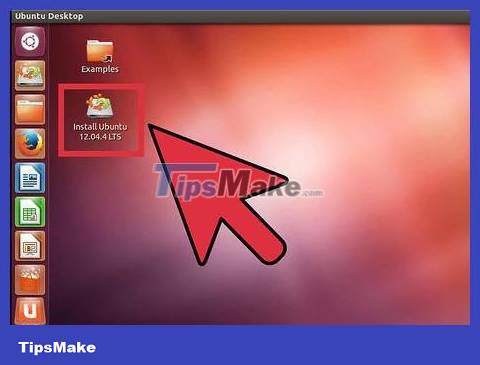
Test your Linux distribution before installing. Most Live CDs and USBs can launch a "live environment" that allows you to test the version before making the switch. While it doesn't allow creating files, you can navigate around the interface and decide if this distribution is right for you.

Start the installation process. While testing the distribution, you can launch the installation process from the desktop application. If you feel there is no need to check, you can start the installation process from the start menu.
You will be asked to configure some basic settings such as language, keyboard layout, and time zone.

Create a username and password. You will need to create information for your Linux installation. The password will be used to log in to the account and perform administrator tasks.
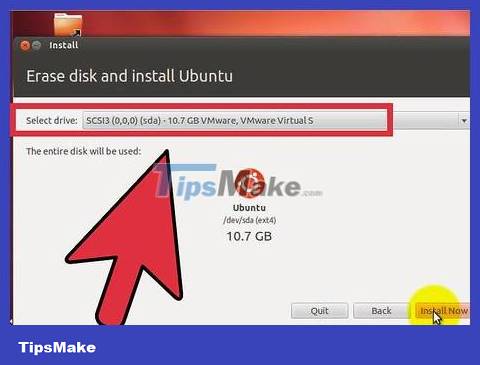
Set up partitions. If you plan to boot Linux in parallel with another operating system, you need to install Linux in a separate partition. A partition is a portion of a hard drive formatted specifically for a certain operating system. You can skip this step if you do not plan to dual boot.
Distributions like Ubuntu will automatically install the recommended partition. You can completely adjust it manually. Most Linux installations require a minimum of 20 GB, so you'll want to make sure you prepare enough space for the operating system along with other programs/files you might need. install or create.
If the installation process does not automatically select the partition, make sure that the partition you create is formatted as Ext4. If the copy of Linux you are installing is the only operating system on your computer, you may need to set the partition size manually.
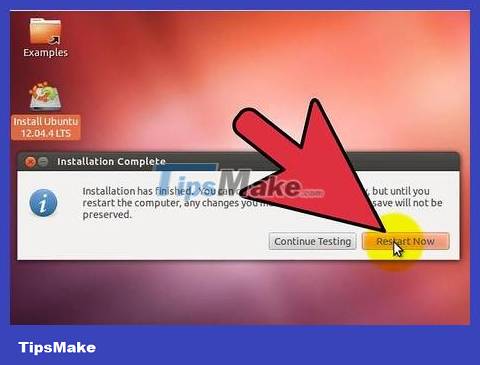
Boot into Linux. After installation is complete, the computer will restart. The new screen that appears when the computer boots is called 'GNU GRUB'. This is the bootloader that handles the Linux installation process. Select your new Linux distribution from the list on the screen. If your computer has only one operating system, this screen may not be displayed. If your computer has two operating systems and this screen does not appear automatically, you can actively open it by pressing the Shift key on the manufacturer's quick screen.
If you have multiple distributions installed on your computer, they will all be listed here.
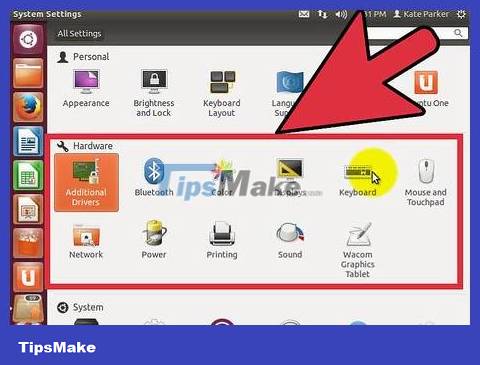
Check the hardware. Most hardware works well with Linux distributions, but you'll also need to download some additional drivers to get things running smoothly.
Some hardware requires proprietary drivers to function properly on Linux. This problem is very easy to encounter with graphics cards. Usually, open source drivers will work, but if you want to take full advantage of your graphics card's capabilities, you should download proprietary drivers from the manufacturer.
On Ubuntu, you can download proprietary drivers through the System Settings menu. Click on the Additional Drivers option and select the graphics driver from the list. Other distributions will have specific methods for adding drivers.
You can also find other drivers, such as Wi-Fi drivers, from this list.
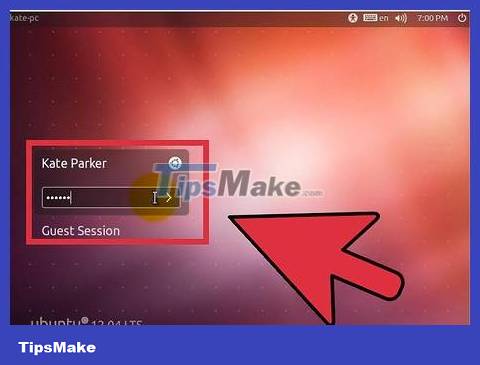
Start using Linux. After the installation is complete and you are sure that the hardware is working properly, you can start using Linux. Most distributions come pre-installed with various popular programs, which you can also download from their respective file repositories.
Install specific Linux distribution

Install Ubuntu . Ubuntu is one of the most popular distributions available. There are two releases: long term and short term with the latest features. The long-term version supports more software.
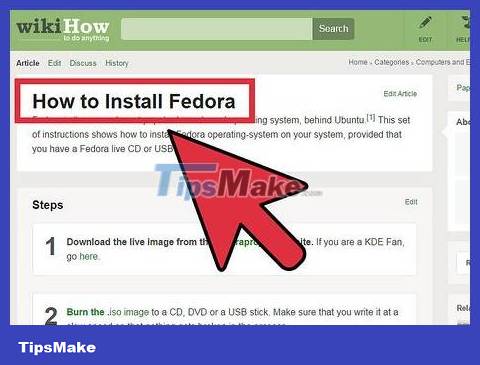
Install Fedora. Fedora is also a very popular distribution. Fedora is widely used in enterprise systems and business environments.

Install Debian. Debian is a distribution for Linux fans. This is considered one of the least buggy versions of Linux. Debian also has many software packages available.

Install Linux Mint . Linux Mint is one of the newest available distributions and is gaining popularity very quickly. Although built on the Ubuntu system, Linux Mint has many tweaks based on user feedback.
You should read it
- 5 reasons to install Linux on old computers
- How to install Kali Linux on macOS
- Steps to install Webex for Linux
- How to install NVIDIA drivers on Kali Linux
- How to install Kali Linux on Android using Linux Deploy
- How to install Windows Game on Linux with Winepak
- Instructions for installing basic Arch Linux
- How to install Kali Linux on your computer
May be interested
- How to install Spotify on Linux
 spotify has actually supported linux for a long time. although most distributions do not include this application in the repository for license reasons, it is not really difficult to install this official player on a linux pc.
spotify has actually supported linux for a long time. although most distributions do not include this application in the repository for license reasons, it is not really difficult to install this official player on a linux pc. - How to Install VirtualBox on Linux
 setting up a virtual machine can be a great way to test alternative software or operating systems on a computer without altering or putting the existing system at risk.
setting up a virtual machine can be a great way to test alternative software or operating systems on a computer without altering or putting the existing system at risk. - How to install Deepin Linux
 deepin linux is an excellent distribution. so why not experience it on your computer? deepin has a variety of high-quality layouts / interfaces and great software.
deepin linux is an excellent distribution. so why not experience it on your computer? deepin has a variety of high-quality layouts / interfaces and great software. - How to Install Asahi Linux on an Apple Silicon Mac
 asahi linux is a project to port the linux kernel and related software to macs powered by apple silicon. it is still under development, but it has made significant progress in a short period of time.
asahi linux is a project to port the linux kernel and related software to macs powered by apple silicon. it is still under development, but it has made significant progress in a short period of time. - How to install and use TeamViewer on Linux
 teamviewer is a powerful tool that allows teams to collaborate and share their screens in real time. it is also extremely useful in remote technology support.
teamviewer is a powerful tool that allows teams to collaborate and share their screens in real time. it is also extremely useful in remote technology support. - Should I install Arch Linux?
 arch linux is one of the most popular linux operating systems. arch linux is even easier to install than arch-based distributions like manjaro and antergos.
arch linux is one of the most popular linux operating systems. arch linux is even easier to install than arch-based distributions like manjaro and antergos. - How to install Handbrake on Linux
 handbrake is a powerful open source tool for encoding and editing videos. it includes a graphical control panel to manage encryption and even preview the results.
handbrake is a powerful open source tool for encoding and editing videos. it includes a graphical control panel to manage encryption and even preview the results. - How is Arch Linux different from other Linux versions?
 arch linux is arguably the most misunderstood linux distribution. many people find arch difficult to install and maintain.
arch linux is arguably the most misunderstood linux distribution. many people find arch difficult to install and maintain. - How to install and remove fonts on Linux
 the linux system has many integrated fonts but you still can't find the font you need. downloading and installing new fonts is very easy on linux and we will show you how to do this in the following article.
the linux system has many integrated fonts but you still can't find the font you need. downloading and installing new fonts is very easy on linux and we will show you how to do this in the following article. - How to install Linux operating system on Mac
 if you have a mac and want to explore a new open source operating system, check out the instructions on how to install linux on a mac below.
if you have a mac and want to explore a new open source operating system, check out the instructions on how to install linux on a mac below.









 How to Install Java on Linux
How to Install Java on Linux How to Install Linux Mint Operating System
How to Install Linux Mint Operating System How to Take Screenshots on Linux
How to Take Screenshots on Linux How to Install Ubuntu Linux
How to Install Ubuntu Linux How to Change Root Password in Linux
How to Change Root Password in Linux How to Format USB on Ubuntu
How to Format USB on Ubuntu